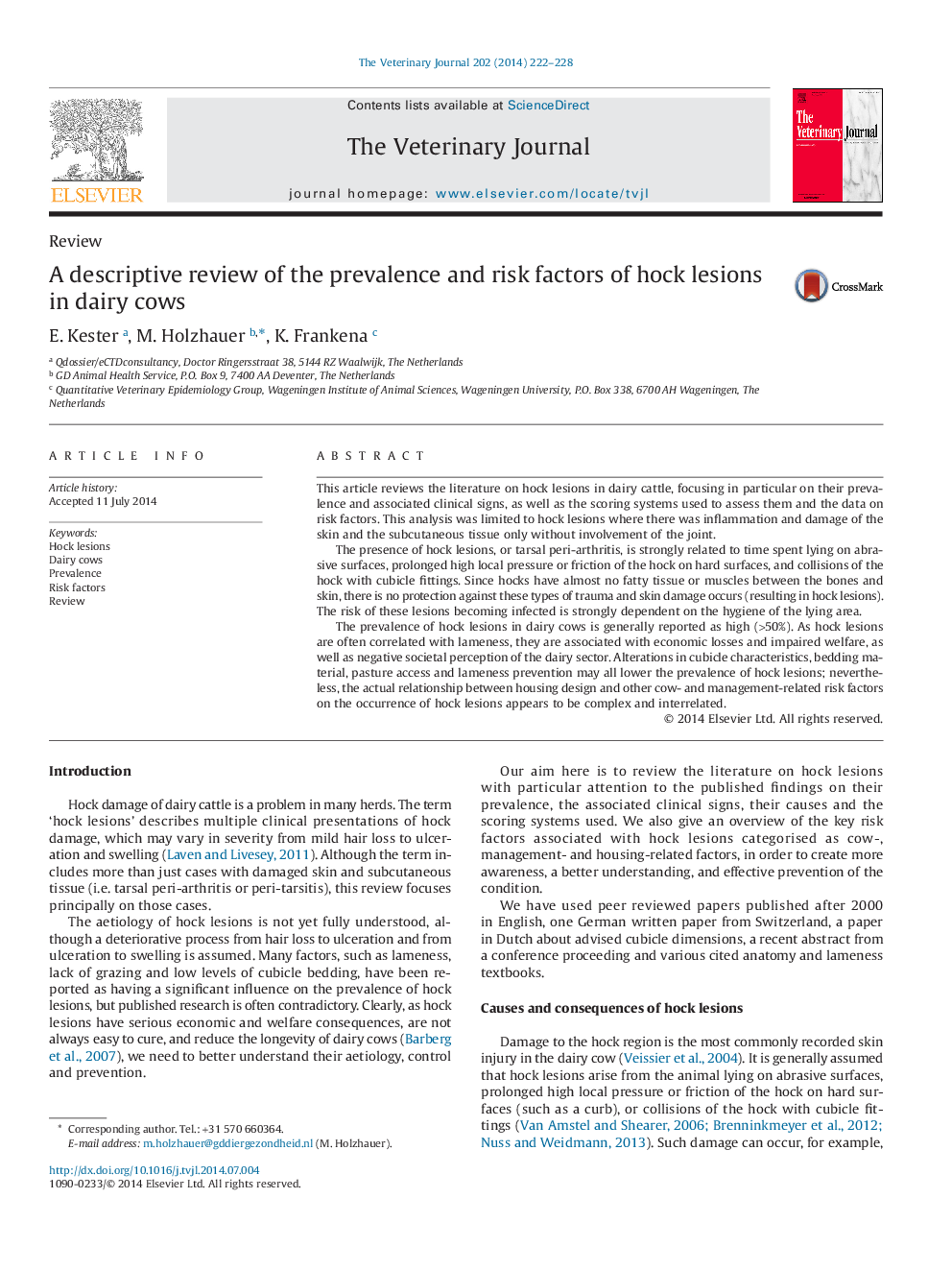| کد مقاله | کد نشریه | سال انتشار | مقاله انگلیسی | نسخه تمام متن |
|---|---|---|---|---|
| 2463901 | 1111764 | 2014 | 7 صفحه PDF | دانلود رایگان |
This article reviews the literature on hock lesions in dairy cattle, focusing in particular on their prevalence and associated clinical signs, as well as the scoring systems used to assess them and the data on risk factors. This analysis was limited to hock lesions where there was inflammation and damage of the skin and the subcutaneous tissue only without involvement of the joint.The presence of hock lesions, or tarsal peri-arthritis, is strongly related to time spent lying on abrasive surfaces, prolonged high local pressure or friction of the hock on hard surfaces, and collisions of the hock with cubicle fittings. Since hocks have almost no fatty tissue or muscles between the bones and skin, there is no protection against these types of trauma and skin damage occurs (resulting in hock lesions). The risk of these lesions becoming infected is strongly dependent on the hygiene of the lying area.The prevalence of hock lesions in dairy cows is generally reported as high (>50%). As hock lesions are often correlated with lameness, they are associated with economic losses and impaired welfare, as well as negative societal perception of the dairy sector. Alterations in cubicle characteristics, bedding material, pasture access and lameness prevention may all lower the prevalence of hock lesions; nevertheless, the actual relationship between housing design and other cow- and management-related risk factors on the occurrence of hock lesions appears to be complex and interrelated.
Journal: The Veterinary Journal - Volume 202, Issue 2, November 2014, Pages 222–228
